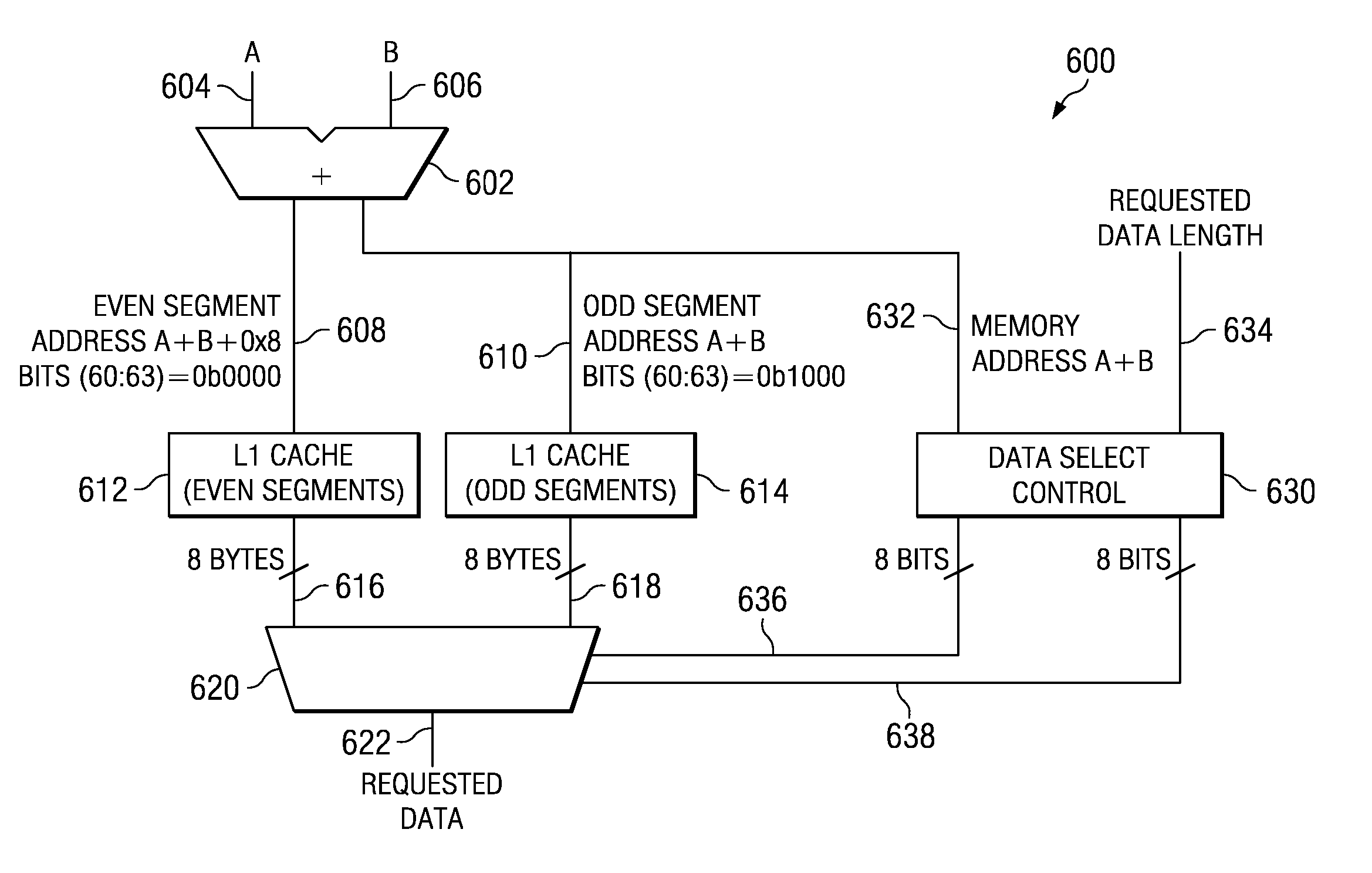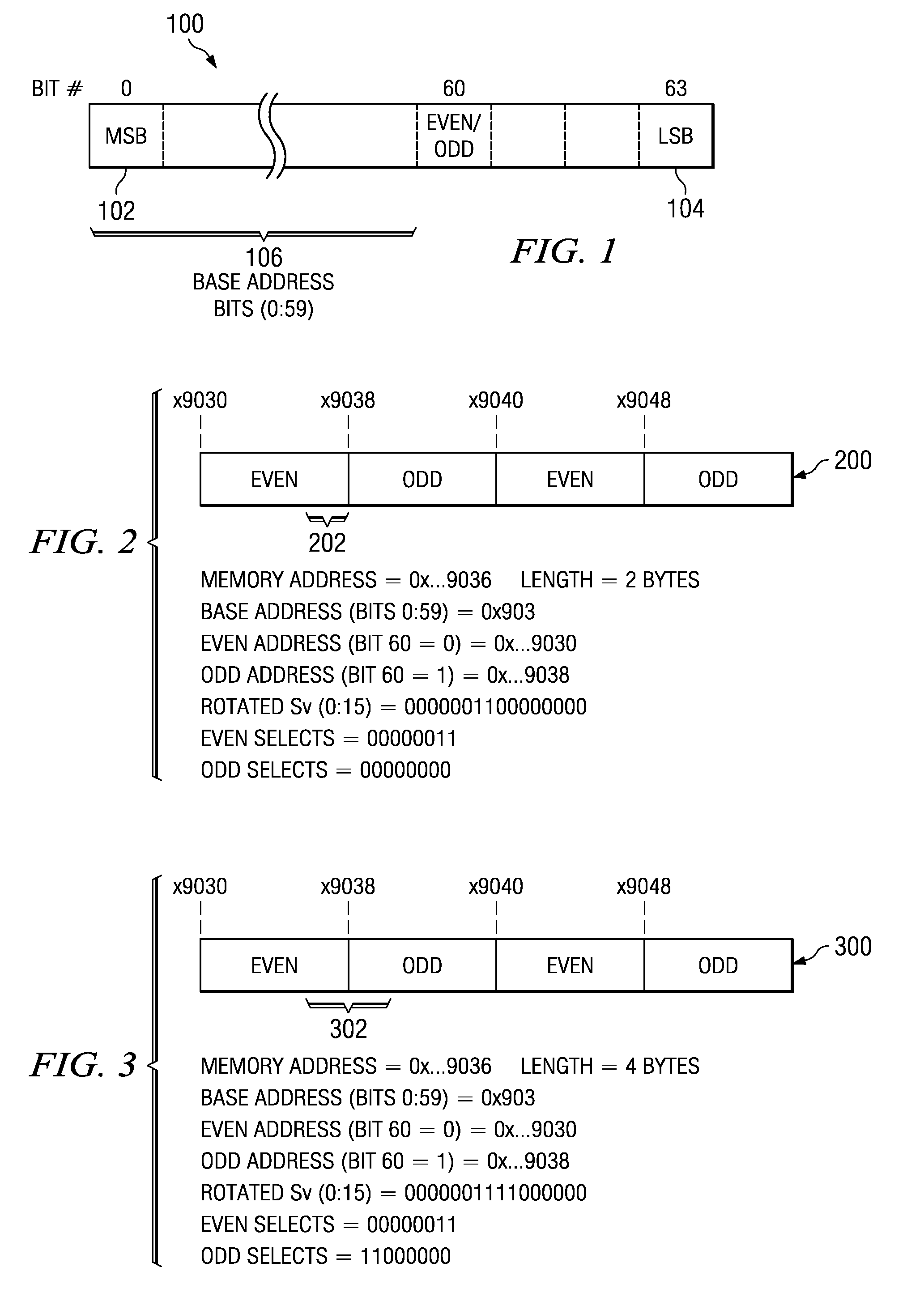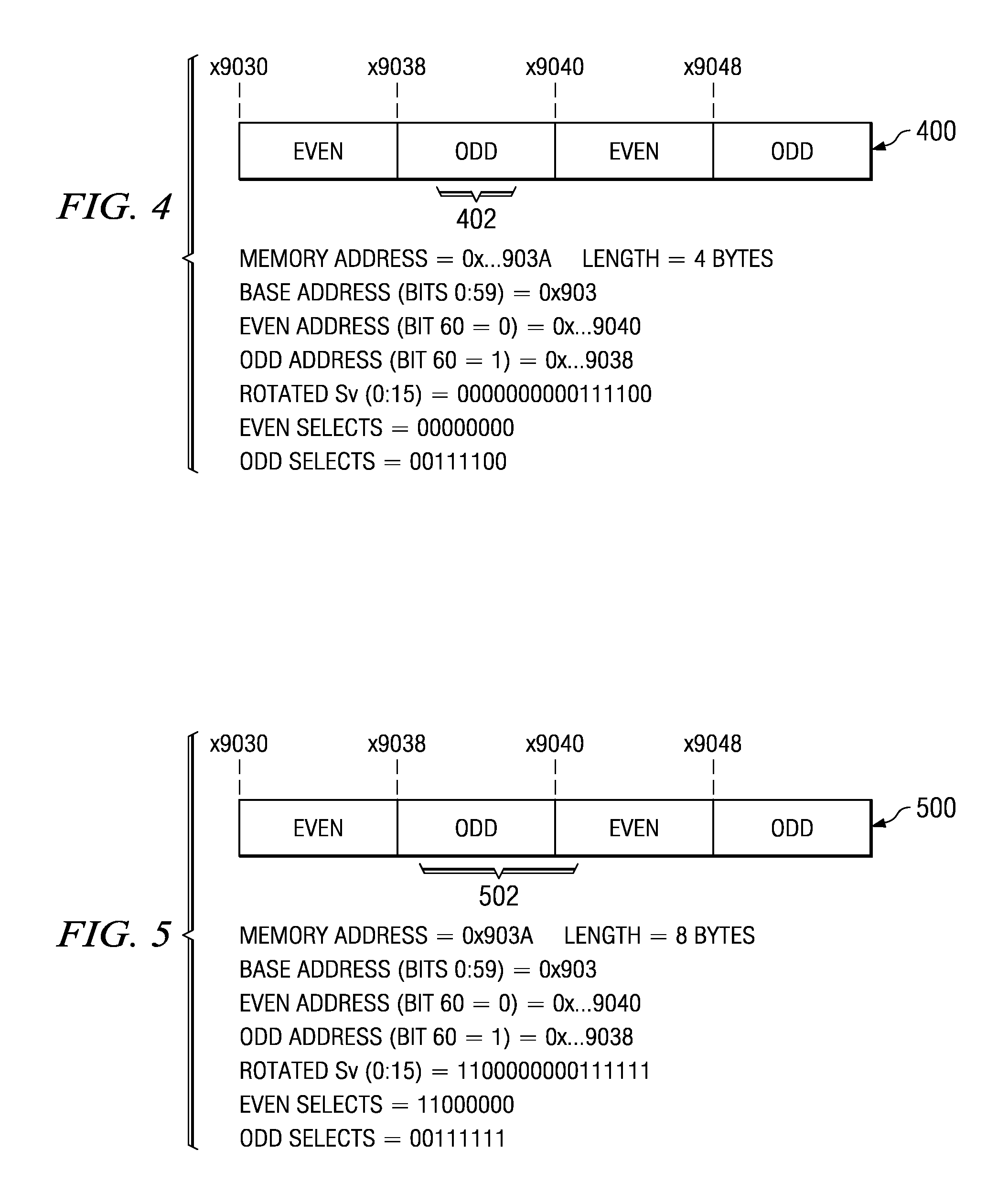Method and apparatus for efficiently accessing both aligned and unaligned data from a memory
a technology of memory and data, applied in the direction of memory adressing/allocation/relocation, instruments, computing, etc., can solve the problems of preventing high-frequency access to such data, requiring additional logic or circuit resources to efficiently support unaligned data, and the amount of data provided, so as to improve access times
- Summary
- Abstract
- Description
- Claims
- Application Information
AI Technical Summary
Benefits of technology
Problems solved by technology
Method used
Image
Examples
Embodiment Construction
[0015] The present invention is directed to a technique for improving access times when accessing memory, such as when accessing data from a data cache or instructions from an instruction cache. As used herein, the term ‘data’ is meant to cover any type of data such as instructions to be executed, or the more traditional data values used in conjunction with instruction execution. The preferred embodiment of the present invention uses 64 bits to address the memory, with bit 0 being the most significant bit and bit 63 being the least significant bit. The address space of the memory, in the preferred embodiment a cache memory, is logically and physically separated into even and odd segments based on bit number 60 of these segments, where when bit 60=0 it specifies an even segment of the cache memory is to be accessed and when bit 60=1 it specifies an odd segment of the cache memory is to be accessed. A specified memory address is determined by adding two source operands of an instructi...
PUM
 Login to View More
Login to View More Abstract
Description
Claims
Application Information
 Login to View More
Login to View More - R&D
- Intellectual Property
- Life Sciences
- Materials
- Tech Scout
- Unparalleled Data Quality
- Higher Quality Content
- 60% Fewer Hallucinations
Browse by: Latest US Patents, China's latest patents, Technical Efficacy Thesaurus, Application Domain, Technology Topic, Popular Technical Reports.
© 2025 PatSnap. All rights reserved.Legal|Privacy policy|Modern Slavery Act Transparency Statement|Sitemap|About US| Contact US: help@patsnap.com



